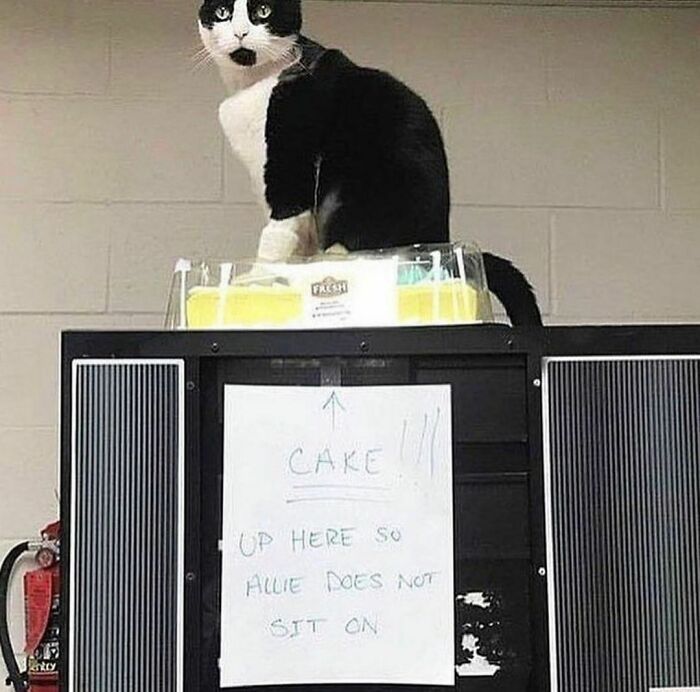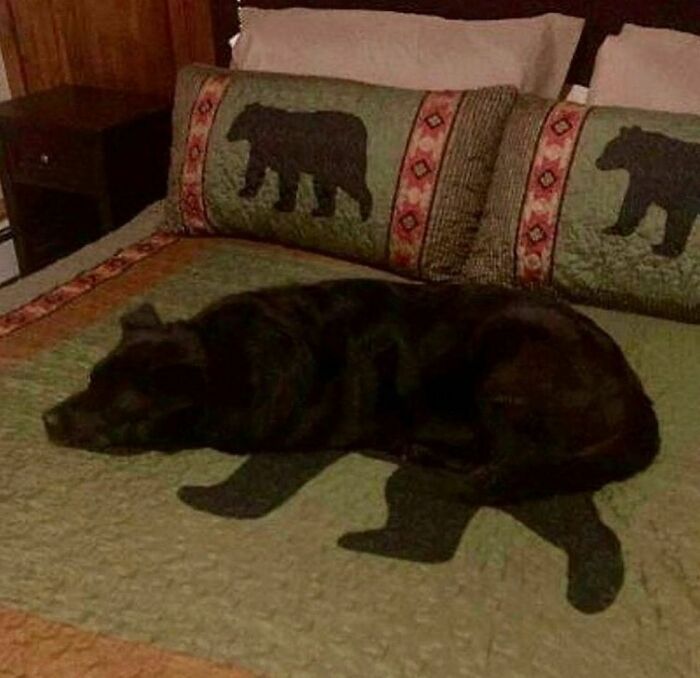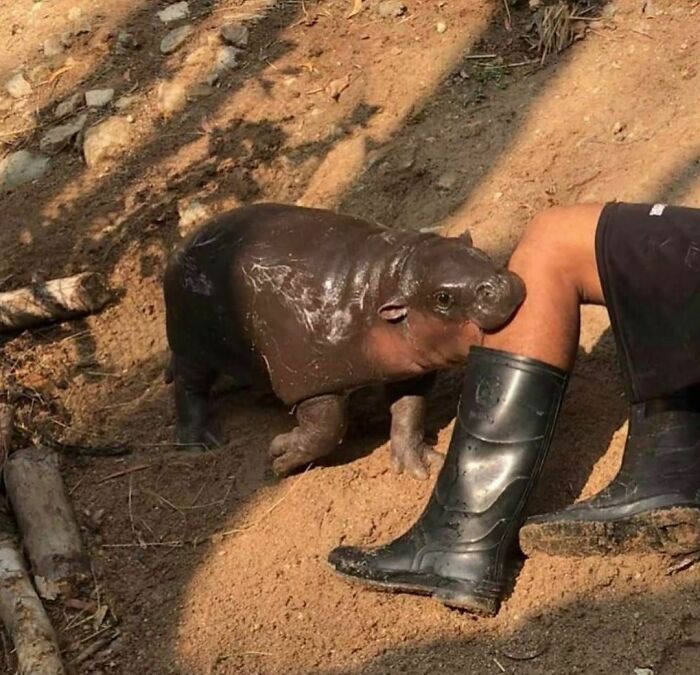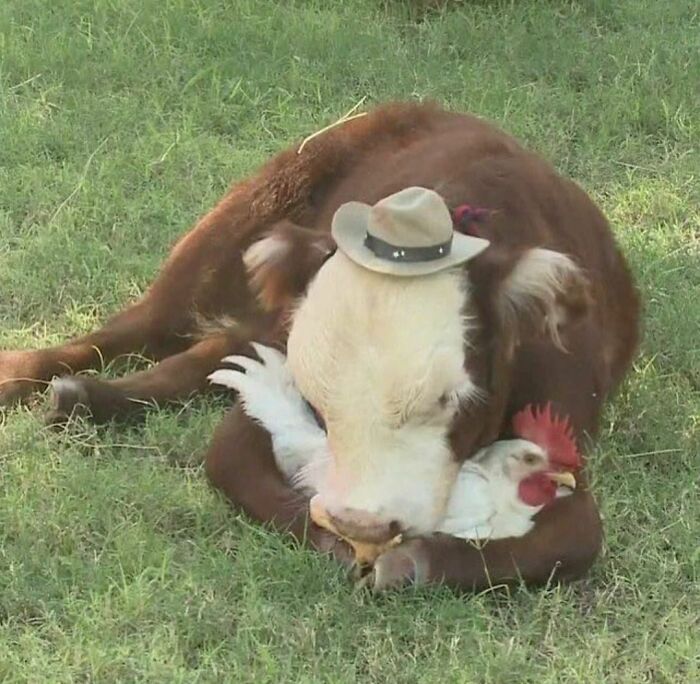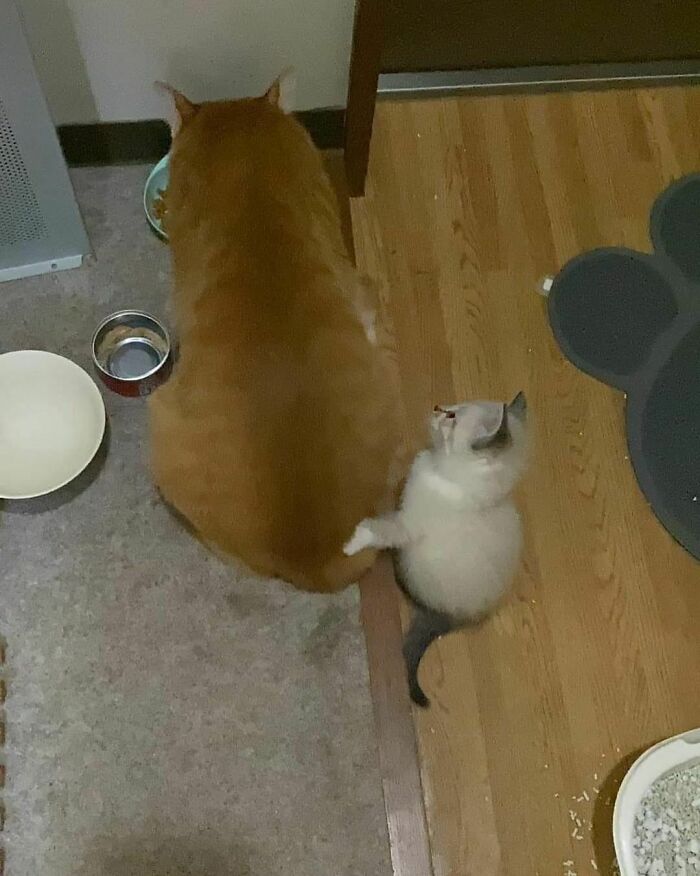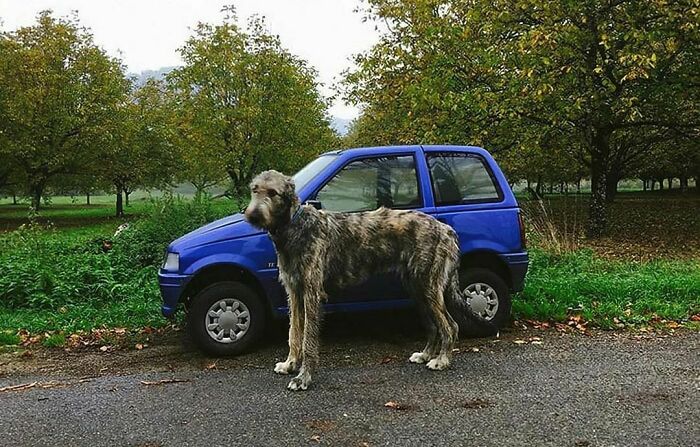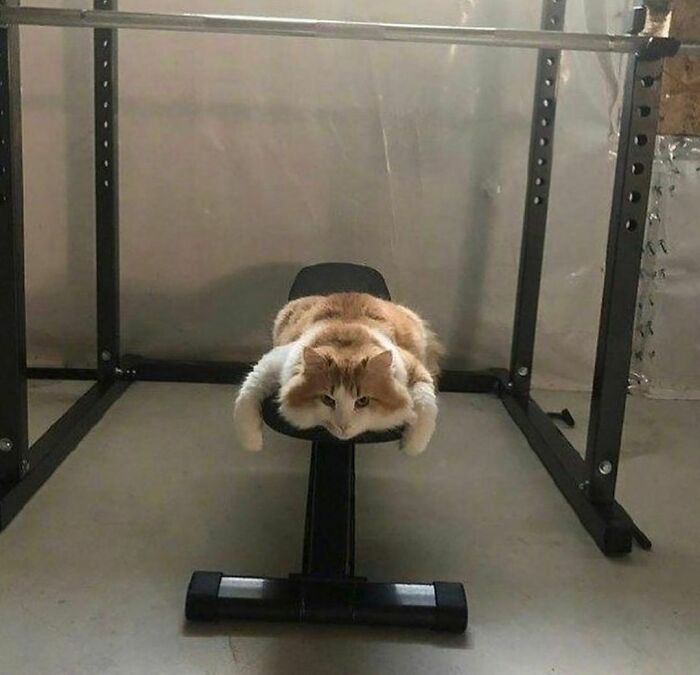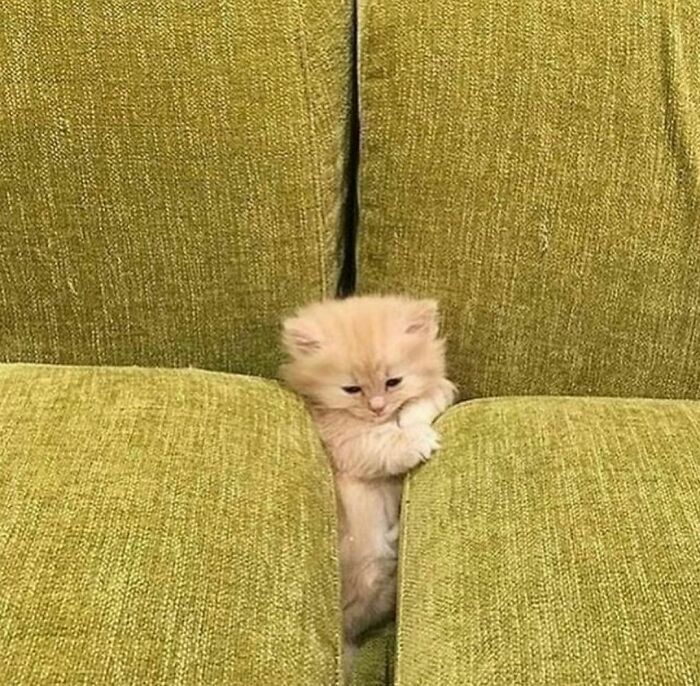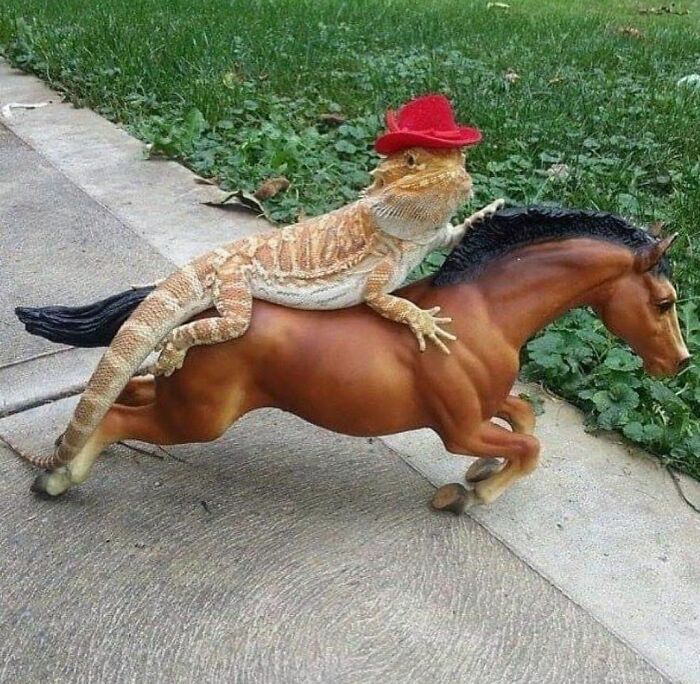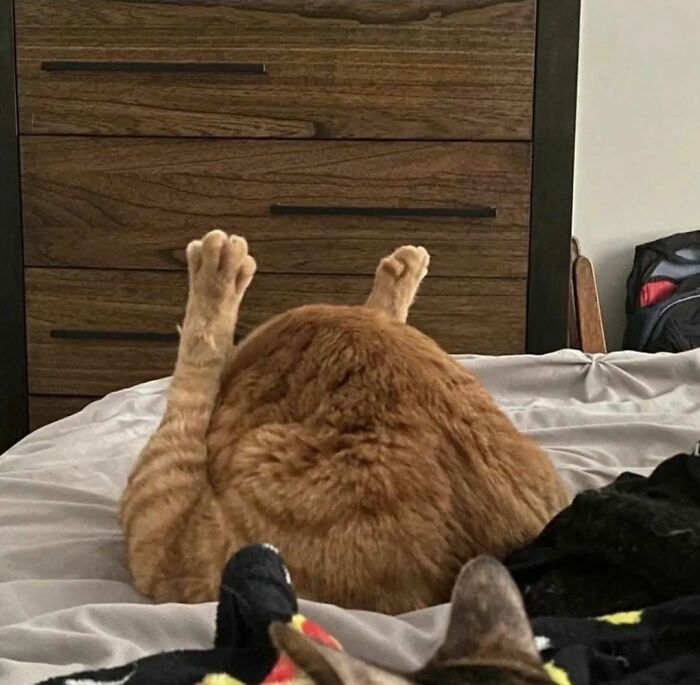
50 Times People Spotted Animals Doing Their Usual Stuff And Just Had To Take Pics (New Pics)
Animals can put on a wonderful show, whether it’s a dog trying its best to pick up all the sticks in the five-mile radius, a cat testing the durability of yet another box, or farm animals living their best life. Even though such goofy behavior can often lead them into quite a predicament, they never cease to amaze us by doing something of the kind again.
A lot of examples of quirky things animals do can be found on “The Snuggle Is Real” Instagram account. With nearly 90 thousand followers, it shares funny animal pictures, among other entertaining content, which we have gathered here for you to browse. Sit back, enjoy the giggle, and make sure to check out our previous collections of “The Snuggle Is Real” animals here, here, and here.
In order to better understand at least one type of the goofy animals in the pictures, Bored Panda has turned to Dr. Marci Koski, a certified feline behavior and training consultant at Feline Behavior Solutions. She was kind enough to answer a few of our questions and provide more information about cat behavior. Scroll down for our full interview with her.
This post may include affiliate links.
Animals manage to bring a smile to one’s face even on the gloomiest of days. Their mischievous ways, over-the-top cuteness, and incredible sense of empathy can melt even the coldest of hearts, and these images are here to prove it.
The funny animal pics found on “The Snuggle Is Real” cover everything from farm animals, to pets, and beyond. Some of the things they do might seem goofy to us, but it’s often instinct that leads them to such actions.
For instance, the internet (and likely the gallery on your phone, if you’re a cat owner) is brimming with pictures of cats in boxes and similar enclosed spaces. As funny and weird as their fascination might seem, it’s actually a survival instinct that guides them to similar containers.
“Cats are both predator and prey animals and they like to sleep where they feel safe,” certified feline behavior specialist, Marci Koski, told Bored Panda. “Boxes and other nooks and out-of-the-way places offer a sense of safety for many cats—they're places where they can hide (from potential predators), stay warm, and sometimes even see without being seen. Just because we might not think a certain container would be good for sleeping doesn't mean that a cat wouldn't find it cozy, warm, and safe-feeling!”
If I fits, I sits kind of situations are just the tip of the iceberg. Another common picture-worthy moment for feline owners is their pet sitting with its mouth slightly open, looking somewhat zoned out. It might seem like not much is going through their heads at that moment; however, such instances often mean they’re tasting the air. Yes, due to a process, known as the Flehmen response, cats are able to taste the air.
Cat behavior can be affected by numerous factors. In addition to genetics, Marci Koski also emphasizes the importance of the environment the feline lives in, and how they are socialized at an early age with humans. “We can't really change a cat's genetics (aside from breeding), but we often do have control over our kitties' environment and socialization,” says the expert.
“It's incredibly important that kittens have good experiences with all types of people (and even other animals) during their sensitive socialization period, which is when they are about 2 weeks old to about 7-9 weeks old.
“Additionally, a cat's environment must be set up so that they can express their natural instincts when it comes to feeling safe and secure in their territory, hunting for prey (or playing, if they are indoor kitties), and utilizing important resources (food, water, litter boxes, perching/sleeping locations, toys, etc.)”
When it comes to pets, entertainment can become a two-way street. The critters lift people’s spirits with their silly or endearing actions, but they often expect attention and playtime in return. “To give your cat the best life, the most important thing is to play, play, play,” Mari Koski pointed out.
“Giving your cat play sessions with a long wand toy that mimics hunting helps build confidence, provide an outlet for predatory instincts, and reduce stress. Plus, it's fun! Daily play sessions (the number will vary depending on the age of your cat) will help you maintain a good bond with your kitty and keep them physically and mentally active,” she added.
Another endearing thing pets do is tilt their head. It’s especially common among dogs that often synchronize it with lifting their ears for the maximum awww effect. There might be several reasons they do it, though. Some scientists argue that the head tilt is related to mental processing, concentration, and memorization of certain information. Others believe it’s related to the sound collection and visual perspective, often affected by their long snouts.
When it comes to more exotic types of pets, parrots can also be great companions. By mimicking human language, they can learn to carry a short conversation or at least answer with phrases they’ve heard people using. They typically use voice to communicate with their flock members and can even put the latter in a playful mood with their play call.
Animals of larger proportions can also be just as playful or sweet. For instance, did you know that cows are profoundly social creatures? According to Animal Outlook, they enjoy playing and are capable of forming strong connections with other species and human beings likewise. In addition to that, they are believed to feel fear and anxiety just like people do.
Fear is not the only emotion humans and animals share; the latter are capable of feeling empathy as well. They are able to empathize with both people and other animals and use different means to express it. For instance, bonobos might console each other by hugging while Asian elephants calm down their friends in distress by ‘talking’ and touching them.
Whether it’s a dog, a parrot, or some other animal, their companionship usually has a positive effect on the owner. The Mental Health Foundation pointed out that they can bring stability into people’s lives, in addition to encouraging them to be more active and social. According to APPA, nowadays, roughly 66% of US households (nearly 87 million of them) own a pet of some kind.

 Dark Mode
Dark Mode 

 No fees, cancel anytime
No fees, cancel anytime 























